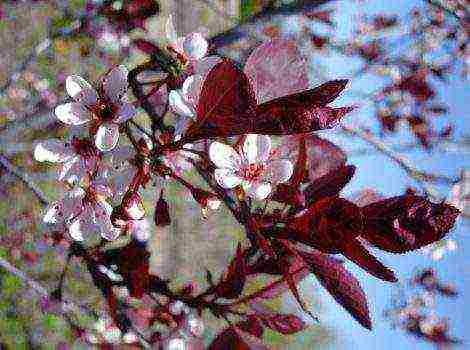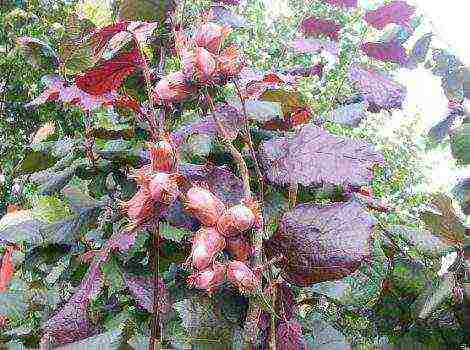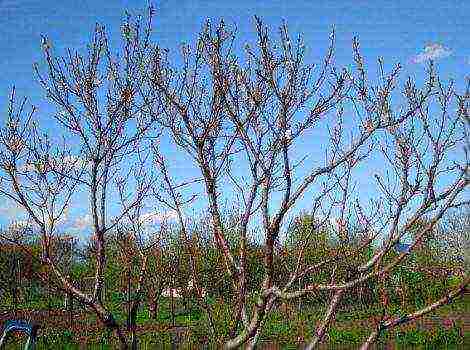Content
Detailed description of the Moskvichka pear variety
Pear is the most revered and unique fruit in its healing and taste properties. Loaded with a lot of fiber, it promotes health and mood. The sweet "gift of the gods", which came to us from the prehistoric era, still drives everyone crazy with its mouth-watering aroma.
In this article we will talk about the Moskvichka pear variety, find out its description and taste characteristics.
Description of the variety
The Muscovite was bred in the last century, in the 80s, at the Agricultural Academy. K.A. Timiryazev, famous breeders: S.T. Chizhov and S.P. Potapov. The name Moskvichka comes from the purpose of the variety for cultivation in the gardens of the Moscow region. The yield of the variety reaches 15-20 tons per hectare. By the time of fruit ripening, it belongs to the early autumn variety. Collecting the fruits of the Moskvichka variety is carried out from the beginning of September to the end of October. Earlier varieties include the August dew pear.
The variety grows in regions of the temperate continental climatic zone of Russia. In a harsh continental and monsoon climate, the variety is not grown. It is widespread in the Moscow region. Zoning: Central, Middle Volga and Volgo-Vyatka regions.
Non-pubescent shoots are of medium size. Their curved shape is light brown. On the shoots, convex and small lentils grow in sufficient numbers. The variety has sufficient winter hardiness. Transfers temperatures up to - 20 ° С, being an average indicator of the frost resistance of the variety
The pear requires pollinating varieties due to its inability to bear fruit without cross-pollination.
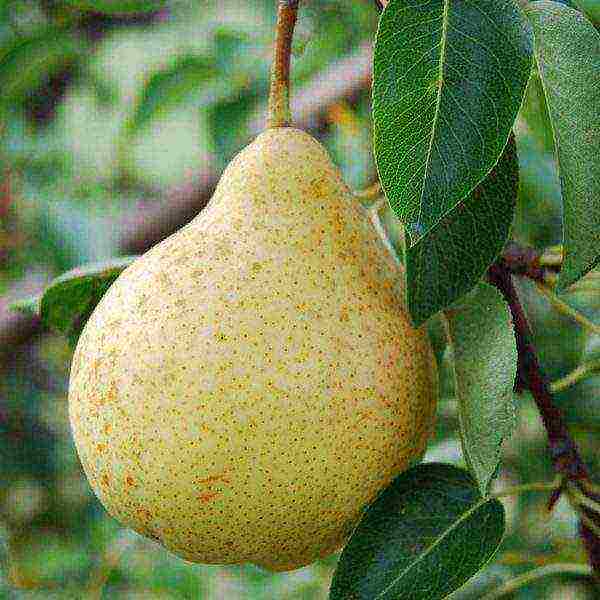
The best pollinators are varieties:
- Otradnenskaya;
- Yakovlev's favorite;
- Elegant Efimova;
- Marble;
- Lada.
Characteristics of trees and fruits
The trees are of the standard type, medium-sized. Saplings have a columnar crown shape, and adults have a conical shape. The crown is of a fairly medium degree of foliage. Skeletal branches are slightly lighter in color than the tree trunk. Small oval green leaves. The flowers contain a white corolla.
NSIrokoperiform yellow fruits with a greenish tinge, no blush. Fruit weight reaches 110-130 grams. The pulp is white, with granulation in the middle. Aromatic consistency of the pulp - sweet and sour taste.
Breeding history and breeding region
The origin of the Moskvichka pear is from the seedlings of the Kieffer pear variety bred in Philadelphia. In experimental trials in 1986, carried out at the variety testing site in the cities of Moscow and Orel, the variety generally did not form fruit.
However, a year later, there was a global change in the study. In unfavorable weather with a low air temperature during flowering, a high fruit set was noted. Revealed more than 50% of the control indicators. All this happened with artificial and natural self-pollination.

Advantages and disadvantages
Advantages of the variety:
- early autumn variety;
- dessert type of variety;
- has early maturity;
- stable fruiting;
- high productivity;
- lack of fruit drop;
- has a high-quality presentation;
- excellent aromatic taste;
- excellent portability of transportation;
- long-term storage;
- resists fruit rot, brown spot, scab;
- resistant to aggressive environmental conditions.
Flaws:
- self-infertile variety;
- average degree of frost resistance;
- low drought resistance.
Planting rules for seedlings
Planting of Moskvichka seedlings is carried out in two seasonal variants:
- autumn: all October; the best period is from 10 to 20 October.
- Spring: April May; the best period is April 20-30.
Seedlings for planting should be one or two years old. Usually, seedlings are planted with two years of age. It is this age of trees that have a formed root system suitable for planting.
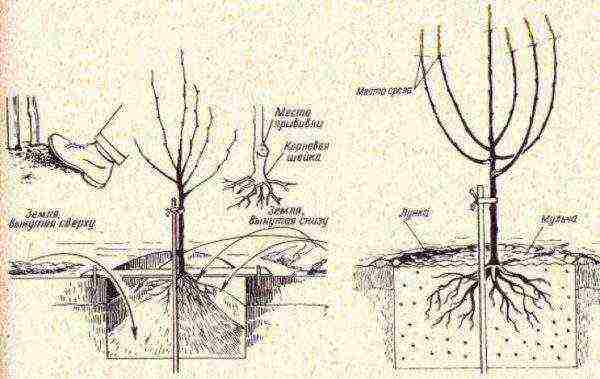
Choosing a seedling for planting:
- the height of the seedling should be 70 - 80 cm;
- powerful and rotten roots are cut from 10 to 20 cm;
- the top is cut off;
- leaves break off;
- broken branches are cut.
One hour before planting, the seedlings are placed in water or mullein solution.
Pears grow on loamy and sandy-sandy black earth. A sunny and dry place is required. The soil should be loose, fertilized, and allow air to circulate. Should contain small amounts of clay and sand. A pit is prepared in advance, half a month before planting.
Preparing the soil for planting:
- the upper soil layer is deposited up to 40 cm;
- a hole is dug - with a diameter of 80 cm to 1 meter, up to 1 m in depth;
- it is necessary to fill the hole with soil prepared in the proportions:
humus - 2.5 buckets,
sand - 2.5 buckets,
superphosphate - 1.5 glass,
potassium sulfate - 2.5 tablespoons
any organic matter - 2 kg;
- fill the hole with earth;
- pour in dolomite flour: 300 grams per 1 bucket of water;
- fill the hole with water - 2 buckets.
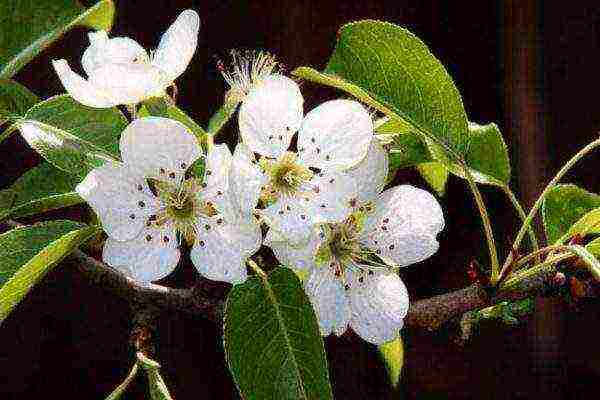
Sequence of planting seedlings:
- A pit is dug with sheer walls in size: width - up to 80 cm, depth - up to 70 cm.
- Fertilizers are poured:
at choice: phosphate rock, horse humus, superphosphate, humus - 1 kg;
potassium sulfate - 150 grams;
wood ash - 800 g;
ammonium nitrate - 2/3 of the pit filling.
- A peg is driven in in the center of the pit, with an exit to the surface, to a height of half a meter.
- Pour some earth in the form of a mound along the bottom of the pit.
- Put a tree on a mound, and evenly distribute the root system.
- The root collar of the seedling should be 5 cm above the ground.
- Cover the hole with earth, constantly shaking the seedling, to distribute the root system, and to avoid voids.
- Tamp the hole thoroughly.
- Water, about 3 buckets per seedling.
- Mulch the hole with a near-stem circle using dry humus.
- Tie the seedling to the peg.
Growing conditions
After planting, the pear is watered: for one seedling - 1 time in 7 days, with 1 bucket of water - in the morning and in the evening. With summer fruiting, watering increases, with the same approach, up to twice every 7 days. In winter, the lower part of the tree is covered with snow.
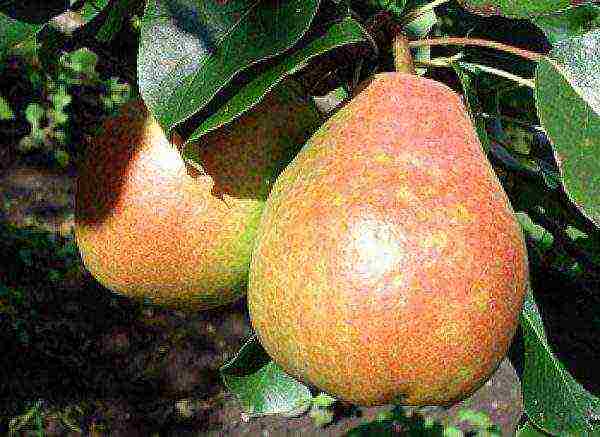
Fruiting trees are watered:
- before budding;
- after flowering - after 2 weeks;
- 2 - 3 weeks before the appearance of fruits;
- after removing the fruit.
The variety should be fed the next year after planting.
Methods for feeding trees on the trunk circle:
- fertilizers are used annually in spring: 1 sq. m: ammonium nitrate - 30 g;
- in the fall, apply fertilizers once every 2 years:
for 1 sq. m, to choose from:
superphosphate - 50 g,
compost - half a bucket,
humus - half a bucket,
potassium sulfate - 30 g.
During the growing season, trees need pruning. This procedure should be carried out in early spring, before bud break. So the crown of trees is formed faster. Shoots tend to flatten out as they grow.
Pruning trees is done as follows:
- branches that grow inside the tree are removed;
- weak shoots are cut off;
- broken branches are cut off;
- removed one of the branches in contact with the other.
The beginning of fruiting of the Moskvichka pear, under good care conditions, begins at 3-4 years of tree growth, and continues annually. The fruiting period can reach over 30 years.
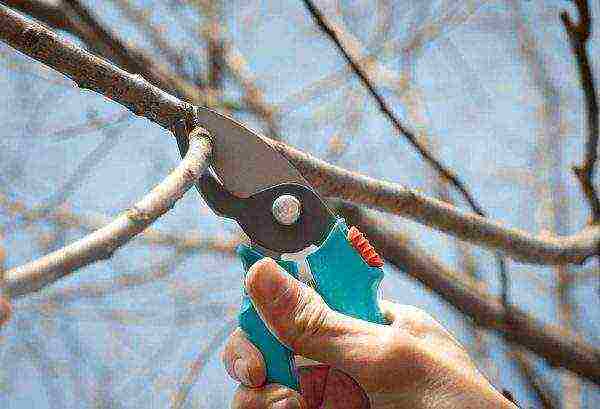
Factors affecting poor fruiting:
- Incorrect feeding.
- Deepening when planting a seedling of the root collar.
- Small garden area.
- Shadow area.
- "Attack" of the site by the apple flower beetle.
- Density of the crown.
- Waterlogged soil.
With the elimination of important factors of poor fruiting, the result comes in the next year.
Productivity and storage
A consistently large yield is obtained even in unfavorable growing climates. Up to 60 kg of harvest can be harvested from a tree. For long-term preservation of pears, they should be removed until they are ripe., with light green skin. Ripening takes place up to 7 days indoors.
Shelf life of fruits:
- refrigerator - 0 ° C - 3 months;
- basement - up to 1 month.
Features of the Moskvichka pear variety
Pears are saturated with a lot of nutrients. When exposed to the body, a general strengthening effect occurs. Thanks to the variety, the human immune system is strengthened.
Pear helps in the fight against colds, having antitussive and antipyretic effects. It is beneficial to the digestion process, producing a strengthening effect. Helps strengthen the walls of blood vessels, calming the heartbeat.
Diseases and pests
The resistance of the variety manifests itself against brown leaf blight, fruit rot and scab.
In the spring, prevention of spraying against fungal diseases is carried out:
- urea solution - 700 g - 1 bucket of water;
- solution of copper or iron sulfate - 150 g - 1 bucket of water.
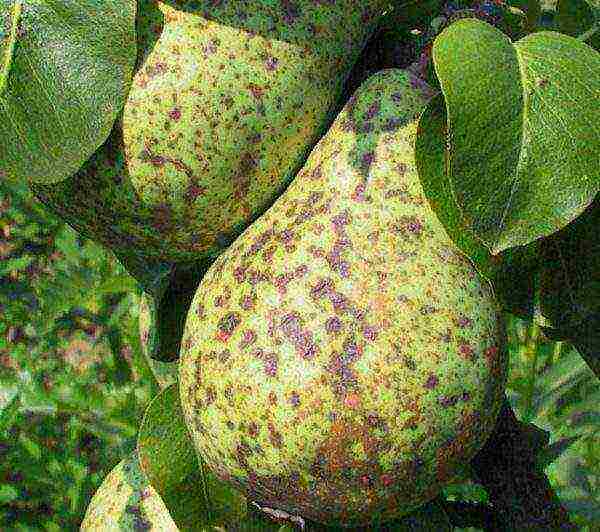
Pear pest prevention is carried out as follows:
- from green aphids, pear podzhorka, pear honeydew:
in the middle of spring - the drug "Kinmix",
before flowering - "Agravertin",
with ovary - "Iskra",
folk methods: decoction of chamomile, green soap;
- from a tick: a solution of colloidal sulfur;
- from leaf rollers: before flowering - "Cymbush".
Gardeners reviews
Muscovite is a truly valuable variety for all gardeners. Hardy, with maximum fruiting, grown in many garden areas.
Christina: They were rightly praised. Good winter hardiness. Dense juicy pulp. It has been growing beautifully in the garden for over 10 years. I treat the variety as "consumer goods". If you want to speed up fruiting, plant branches towards the horizon.
Ivan: From Moskvichka in full delight! One of the most valuable pears. Suitable for gardens of the Moscow region, grows very well. I do not use nitrogen fertilizers in any way. I get a gorgeous harvest!
Yana: The Muscovite bears fruit for the third year in the garden. She suffered least of all from cold and disease.The fruits are large and juicy.
The excellent characteristic properties of the Moskvichka variety deserve to become the most beloved one for everyone who loves pears. Proper care of the fruit tree will bring a bountiful harvest of delicious fruits in the future. A treasure of useful vitamins will always be on your table!
